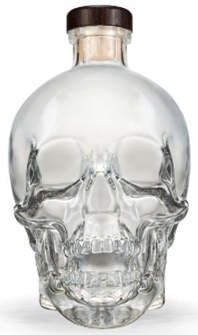What to think about when choosing a new Trademark
Coming up with a new trade mark can be a fun process, but it’s often more complex than you might initially expect and there are several factors which should be considered in order to make sure your new trade mark stands out in the market.
Your new trade mark should be DISTINCTIVE. A great trade mark is creative and unique. Using an invented word which has no meaning, such as Pepsi® for soft drinks, or IKEA® for furniture is a good way to make sure your trade mark is distinctive. If inventing a word, it is prudent to check that your invented word does not have any meaning when translated into another language, particularly if you are intending to sell your goods/service into a country that speaks that language. You do not want to find out that your invented word is actually a swear word in a foreign language after you have launched!
Another way of coming up with a distinctive trade mark is to use a word completely unrelated to your goods/services, for example Apple® for computers or Subway® for sandwiches.
It is also important to make sure that your new trade mark is NOT descriptive of your goods/services or where they come from. Although it may seem like a good idea to have a trade mark which indicates what your products/services are, in reality this does not make for a strong trade mark. Trade marks such as “WATERPROOF” for coats or “COMFY” for beds describe characteristics of the goods so, not only are they not distinctive, and will not make your products/services stand out. In addition, descriptive trade marks are difficult to register without extensive use.
Trade marks are not limited to being just words. They can also be logos. The most effective trade marks often involve a simple logo, which can be used in numerous different colours and yet still indicates the origin of the goods/service. Great examples of such logos are: ![]() ® and
® and ![]() ®. Both of these trade marks are simple, yet effective, and may be used both with and without the associate brand names Apple® and Nike®.
®. Both of these trade marks are simple, yet effective, and may be used both with and without the associate brand names Apple® and Nike®.
Alternatively, you may also want to combine a distinctive word with a simple logo. For example  and
and  . Both these marks are associated with their specific colour combinations, which adds to their distinctiveness.
. Both these marks are associated with their specific colour combinations, which adds to their distinctiveness.
The best trade marks are instantly recognisable and easy to remember. Therefore, you should also consider how a consumer will refer to your trade mark. In most instances, consumers will speak your trade mark. Therefore, if you have invented word, is it easily pronounceable? In addition, logos without a word element, which cannot be spoken are less desirable. If you are old enough, you will remember the confusion when the musician Prince announced that he would no longer go by the name Prince, but rather by the Symbol  . Long trade marks and/or trade marks involving intricate designs are also less effective.
. Long trade marks and/or trade marks involving intricate designs are also less effective.
Another factor to consider when designing your trade mark is how you are going to use it. If you are selling goods, will it be attached to the goods? Will the shape of your goods be your trade mark? Coco cola® have famously registered the shape of their glass bottles as a trade mark. Another example of the shape of the goods being the trade mark is Crystal Head Vodka which also uses the shape of their bottle as their trade mark.

However, the common element for all of these brands is the distinctiveness of the mark – the more distinctive the mark, the better!
As we have discussed in our previous blog about Clearance Searches for New Brands, it is also very important to check that the trade mark you have selected is free for you to use and is not already in use by another party. Please contact us if you would like our help with advice on distinctiveness or your mark and/or obtaining a freedom to operate search. Of course, we are always happy to help you obtain protection for your new trade mark.
